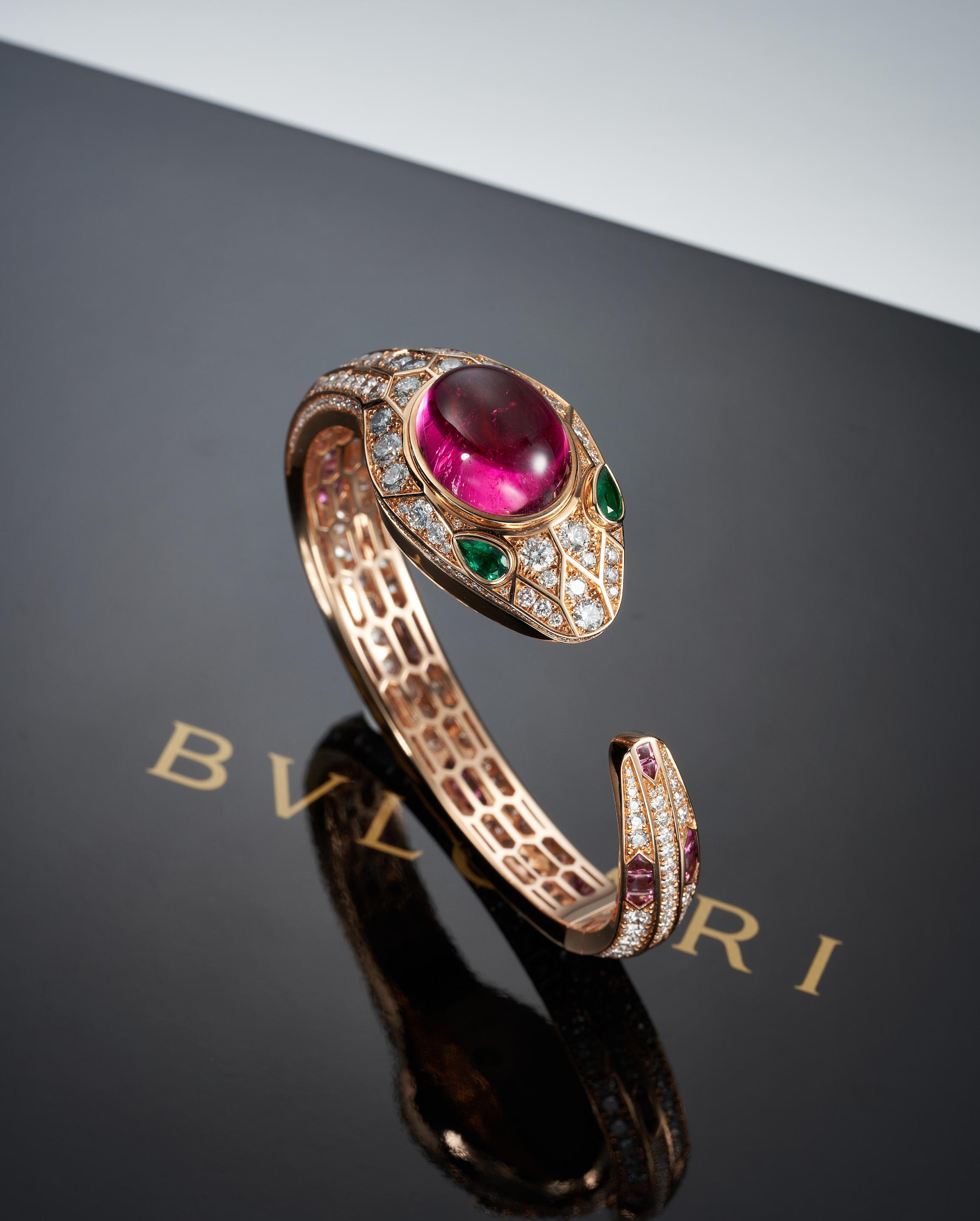A magnificent diamond, emerald and enamel turban ornament ( sarpech ) Mughal or Deccani, circa 1790 Designed as nine floral panels set with large tablet-cut diamonds within foiled gold surrounds with finely worked emerald and ruby detail, suspending a fringe of fifteen emerald beads and two natural pearls. the detachable open-work jigha of graduated scroll form set in similar fashion with tablet-cut diamonds suspending two emerald beads and a pearl drop, the reverse depicting red enamel poppy flowers on white and green enamelled foliate ground to the central blue enamel peacock, in fitted red leather case 15 in. (38.0 cm.) wide Accompanied by report No. 0106041 dated 23 July 2001 from the Gübelin Gem Lab, stating that the 132 polished gemstones are natural antique tablet-cut diamonds, also stating that the seventeen polished and drilled gemstones are natural Colombian emeralds with indications of minor clarity enhancement, and that the three drilled pearls are natural With appendix stating "The impressive jewellery item described in the above mentioned Report incorporates a variety of components which epitomise the traditional Indian jewellery style. The flexible sarpech is composed of ten individual segments. Each segment contains a number of tablet-cut diamonds. Assembled they create a truly remarkable collection of diamonds fashioned in this antique cutting style. Four of the eight largest diamonds set in the center of the rosettes were identified to be type IIa diamonds. Diamonds of this type, exhibiting an antique tablet-cut style, are very rare and will most certainly evoke references to the historic term of 'Golconda'. "Seventeen sizeable Colombian emerald beads as well as three natural pearls are suspended as complementary fringes from the sarpech and its jhiga. "The reverse side of this extraordinary sarpech reveals a complex and ornately detailed enamel inlay, worthy of extra mention. Indian jewellery, composed of such a collection of antique cut gemstones and displaying such a detail of manufacture, is rarely encountered in the gemstone and jewellery marketplace". Also accompanied by report No. 37831 dated 25 July 2001 from the Swiss Gemological Institute (SSEF), stating that six of the larger diamonds are type IIA diamonds and that the seventeen emeralds are of Colombian origin
A magnificent diamond, emerald and enamel turban ornament ( sarpech ) Mughal or Deccani, circa 1790 Designed as nine floral panels set with large tablet-cut diamonds within foiled gold surrounds with finely worked emerald and ruby detail, suspending a fringe of fifteen emerald beads and two natural pearls. the detachable open-work jigha of graduated scroll form set in similar fashion with tablet-cut diamonds suspending two emerald beads and a pearl drop, the reverse depicting red enamel poppy flowers on white and green enamelled foliate ground to the central blue enamel peacock, in fitted red leather case 15 in. (38.0 cm.) wide Accompanied by report No. 0106041 dated 23 July 2001 from the Gübelin Gem Lab, stating that the 132 polished gemstones are natural antique tablet-cut diamonds, also stating that the seventeen polished and drilled gemstones are natural Colombian emeralds with indications of minor clarity enhancement, and that the three drilled pearls are natural With appendix stating "The impressive jewellery item described in the above mentioned Report incorporates a variety of components which epitomise the traditional Indian jewellery style. The flexible sarpech is composed of ten individual segments. Each segment contains a number of tablet-cut diamonds. Assembled they create a truly remarkable collection of diamonds fashioned in this antique cutting style. Four of the eight largest diamonds set in the center of the rosettes were identified to be type IIa diamonds. Diamonds of this type, exhibiting an antique tablet-cut style, are very rare and will most certainly evoke references to the historic term of 'Golconda'. "Seventeen sizeable Colombian emerald beads as well as three natural pearls are suspended as complementary fringes from the sarpech and its jhiga. "The reverse side of this extraordinary sarpech reveals a complex and ornately detailed enamel inlay, worthy of extra mention. Indian jewellery, composed of such a collection of antique cut gemstones and displaying such a detail of manufacture, is rarely encountered in the gemstone and jewellery marketplace". Also accompanied by report No. 37831 dated 25 July 2001 from the Swiss Gemological Institute (SSEF), stating that six of the larger diamonds are type IIA diamonds and that the seventeen emeralds are of Colombian origin





.jpg)

.jpg)







Testen Sie LotSearch und seine Premium-Features 7 Tage - ohne Kosten!
Lassen Sie sich automatisch über neue Objekte in kommenden Auktionen benachrichtigen.
Suchauftrag anlegen